




When doing laundry, it can be frustrating to have your washing machine start shaking and vibrating uncontrollably. Not only can this be noisy and disruptive, but it can also be a sign of a potential problem with your machine. Understanding the common reasons why washing machines shake and learning about possible troubleshooting tips can help you address the issue and prevent further damage.
One common reason why washing machines shake is an uneven load. When you place too many heavy items on one side of the machine or have an imbalance in the load, it can cause the machine to shake during the spin cycle. To prevent this, make sure to distribute the weight of your laundry evenly within the machine.
Another possible cause of shaking is a machine that is not level. If your washing machine is not balanced properly, it can cause it to vibrate and shake. To check if your machine is level, you can use a simple bubble level or adjust the feet of the machine until it is balanced. This can help reduce the shaking and improve the overall performance of your machine.
In some cases, shaking can also be caused by a worn or damaged belt. If you notice excessive shaking along with a loud noise coming from your washing machine, it may be a sign that the belt needs to be replaced. Consult your machine’s manual or contact a professional for assistance with belt replacement.
Overall, understanding why washing machines shake and knowing how to troubleshoot the issue can help you maintain the performance and longevity of your machine. By addressing the common causes and following the troubleshooting tips mentioned above, you can minimize the shaking and ensure that your laundry routine remains smooth and uninterrupted.
Why Do Washing Machines Shake?
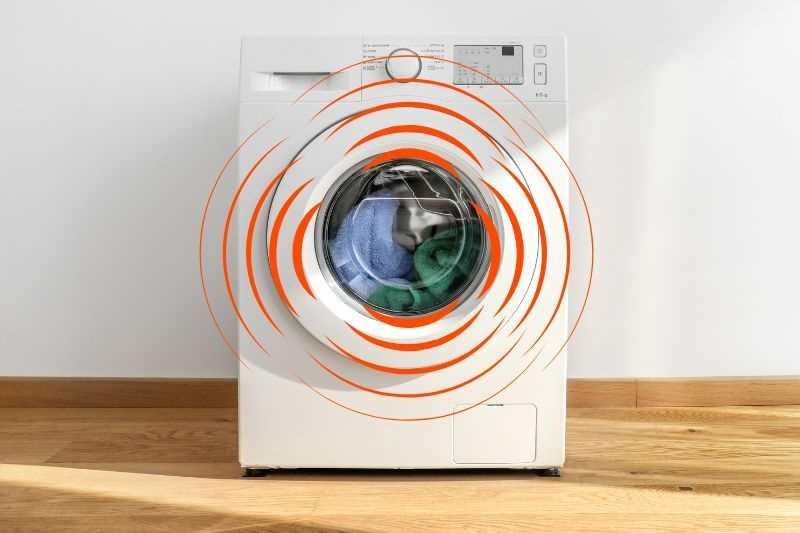
Shaking or vibrating of washing machines can be common, especially during certain stages of the wash cycle. There are several reasons why washing machines shake, including:
- Imbalanced loads: When clothes or other items in the drum are not evenly distributed, this can cause the machine to shake. Unevenly distributed loads can happen when you overload the machine with too many clothes or when you wash bulky items like blankets or towels.
- Leveling issues: If the washing machine is not level, it can cause shaking during operation. This can happen if the machine is not properly installed or if the legs or feet are not adjusted correctly.
- Worn or unbalanced drum: Over time, the drum of the washing machine can become unbalanced due to wear and tear or other factors. This can cause shaking or vibrating during the wash cycle.
- Loose or damaged parts: Loose or damaged parts, such as springs or shock absorbers, can also contribute to shaking or vibrating of the washing machine.
It is important to address shaking or vibrating issues with your washing machine as soon as possible, as prolonged shaking can lead to further damage or even complete machine failure. Here are some troubleshooting tips to help resolve the issue:
- Check the load: Make sure the clothes or items in the machine are evenly distributed. If the load is unbalanced, redistribute the items and try washing again.
- Level the machine: Use a level to check if the machine is sitting level on the floor. Adjust the legs or feet if necessary to ensure proper leveling.
- Inspect the drum: If the drum appears to be wobbling or unbalanced, it may need to be repaired or replaced. Contact a professional technician for further assistance.
- Check for loose parts: Inspect the machine for any loose or damaged parts, such as springs or shock absorbers. Tighten or replace any parts as needed.
If you have tried these troubleshooting tips and the shaking or vibrating issue persists, it is recommended to seek professional help. A qualified technician can diagnose and repair any underlying issues with your washing machine.
Uneven Load Distribution

One common reason why washing machines may shake is an uneven load distribution inside the drum. If the laundry is not distributed evenly, it can cause the machine to become unbalanced during the spin cycle, resulting in excessive shaking.
To prevent this, it is important to properly distribute the laundry inside the drum before starting the machine. Here are some tips to ensure an even load distribution:
- Separate heavy and light items: Avoid putting heavy items, like towels or jeans, on one side of the drum and lightweight items, like shirts or socks, on the other. Mix heavy and light items evenly throughout the drum.
- Don’t overload the machine: Overloading the machine can lead to an unbalanced load. Make sure to leave enough space for the laundry to move freely inside the drum.
- Use a laundry bag for small items: If you are washing small items, like socks or lingerie, place them in a laundry bag to prevent them from getting trapped in one corner of the drum.
- Balance large items: For large items, such as comforters or pillows, you may need to manually balance them inside the drum. Spread them out evenly to distribute the weight.
If the shaking continues despite ensuring an even load distribution, there may be other factors contributing to the problem. It is recommended to check the machine’s leveling, examine the shock absorbers, and inspect the placement of the machine on the floor. Consulting the manufacturer’s instructions or contacting a professional may be necessary to address the issue.
Loose or Unbalanced Machine
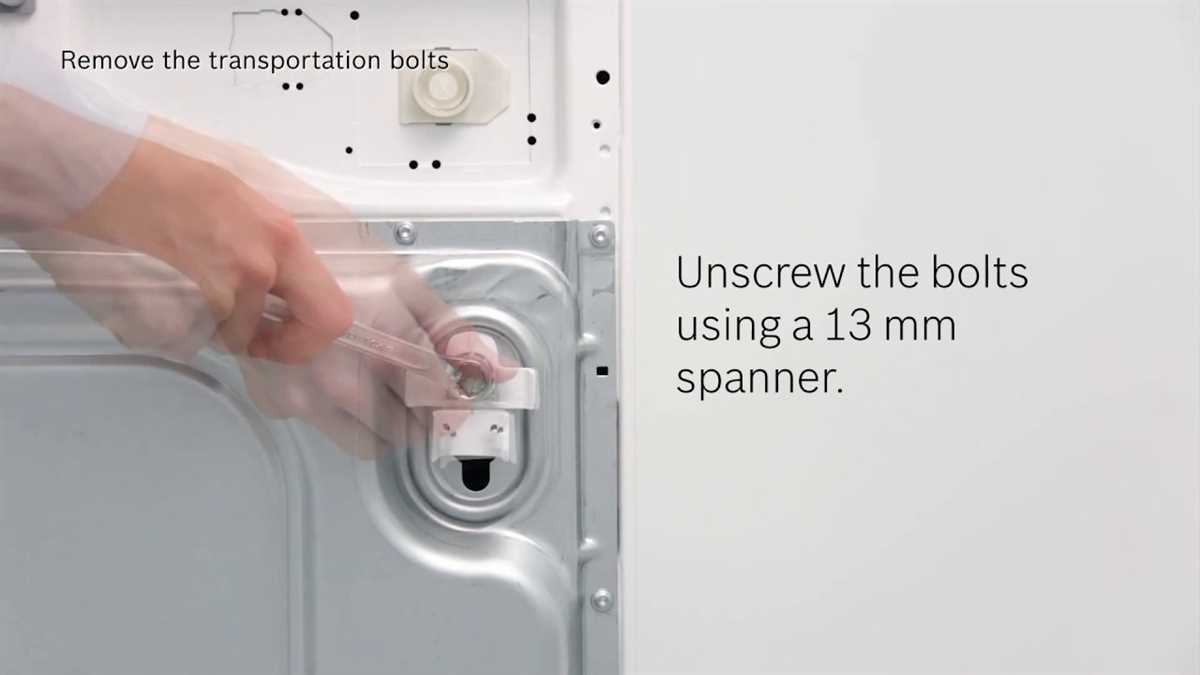
If your washing machine is shaking during operation, one possible reason could be that it is loose or unbalanced. Here are some troubleshooting tips to help you resolve the issue:
1. Level the Machine
Make sure that your washing machine is placed on a solid and even surface. Use a level tool to check if the machine is leveled. If it is not, adjust the machine’s feet accordingly until it is levelled.
2. Secure the Feet
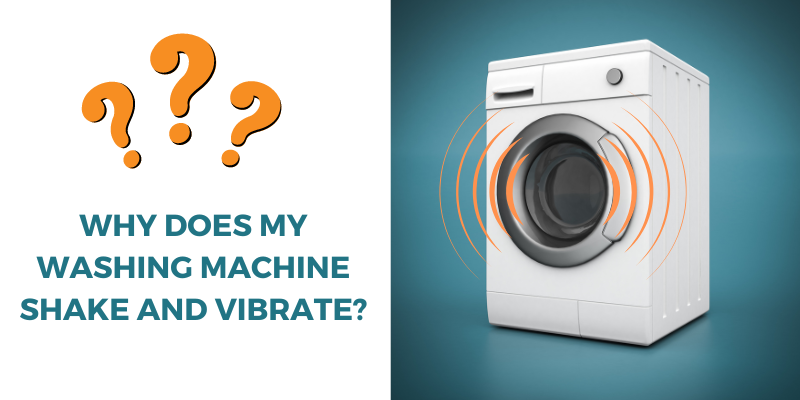
Check if all the feet of your washing machine are firmly in contact with the floor. If not, tighten the locking nuts on each foot to secure them in place. This will prevent the machine from moving or vibrating excessively.
3. Distribute the Laundry Evenly
Uneven distribution of laundry can cause the machine to become unbalanced during the spin cycle. Make sure to distribute the clothes evenly inside the drum, especially larger or heavier items. This will help the machine to operate smoothly without excessive vibrations.
4. Avoid Overloading

Overloading the machine with too many clothes can also lead to imbalance and shaking. Follow the manufacturer’s guidelines for load capacity and avoid exceeding it. This will ensure that the machine can handle the load without straining or shaking.
5. Check for Damaged Suspension Springs or Shock Absorbers
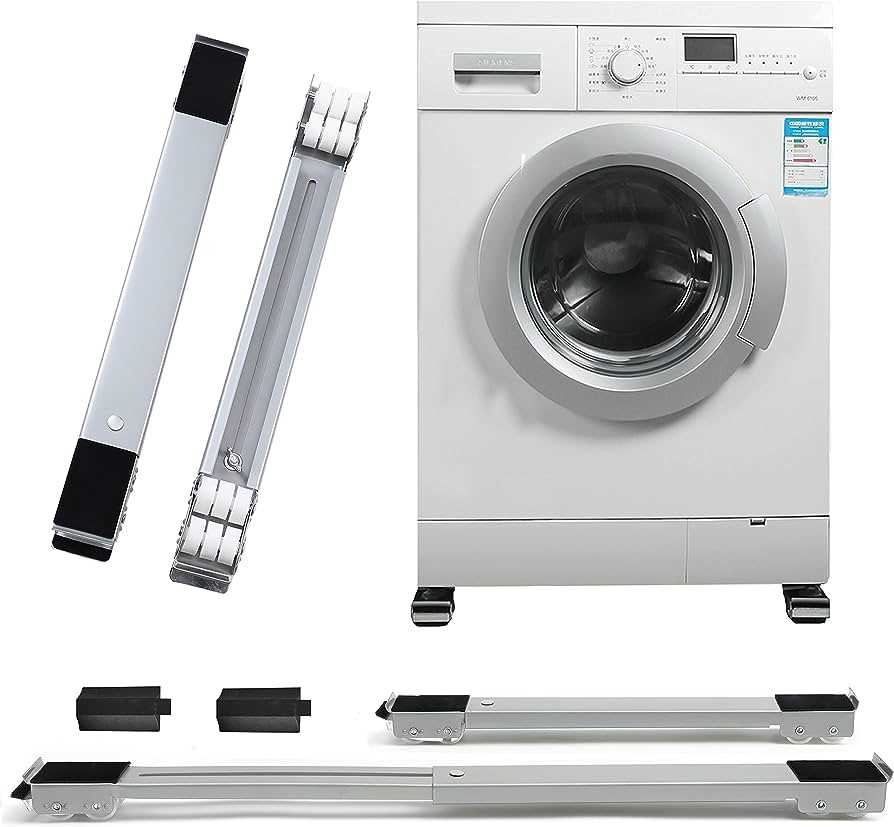
If the above steps do not resolve the issue, it is possible that the washing machine could have damaged suspension springs or shock absorbers. These components help to dampen vibrations and maintain stability during operation. If you suspect a problem with these parts, it is best to contact a professional technician for repair or replacement.
By following these troubleshooting tips, you can address the problem of a loose or unbalanced washing machine and minimize shaking during operation.
Worn or Damaged Suspension Springs

Suspension springs in a washing machine are responsible for keeping the drum stable during the spin cycle. Over time, these springs can become worn or damaged, leading to excessive shaking and vibrating.
Signs of Worn or Damaged Suspension Springs:
- Increased shaking and vibrating during the spin cycle.
- Noise from the springs snapping or rubbing against other components.
- Visible signs of wear or damage on the springs, such as rust or cracks.
Troubleshooting Tips for Worn or Damaged Suspension Springs:
- Check for visible signs of wear: Inspect the suspension springs for any visible signs of wear or damage. If you notice rust, cracks, or any other issues, the springs may need to be replaced.
- Test the springs: You can also test the condition of the suspension springs by manually pushing down on the corners of the washing machine drum. If the drum bounces back easily or feels loose, it may be a sign that the springs are worn out or damaged.
- Replace the suspension springs: If you determine that the suspension springs are worn or damaged, you will need to replace them. This usually involves removing the top or rear panel of the washing machine to access the springs. Consult the manufacturer’s instructions or a professional technician for guidance on replacing the springs.
Preventing Worn or Damaged Suspension Springs:
- Avoid overloading the washing machine with heavy items, as this can put extra strain on the suspension springs.
- Ensure that the washing machine is level using a spirit level. Uneven surfaces can cause the suspension springs to work harder and become worn more quickly.
- Regularly clean and maintain the washing machine to prevent rust and other damage to the suspension springs.
By following these troubleshooting tips and taking preventative measures, you can address issues with worn or damaged suspension springs in your washing machine and reduce the amount of shaking and vibrating during the spin cycle.
Leveling Issues
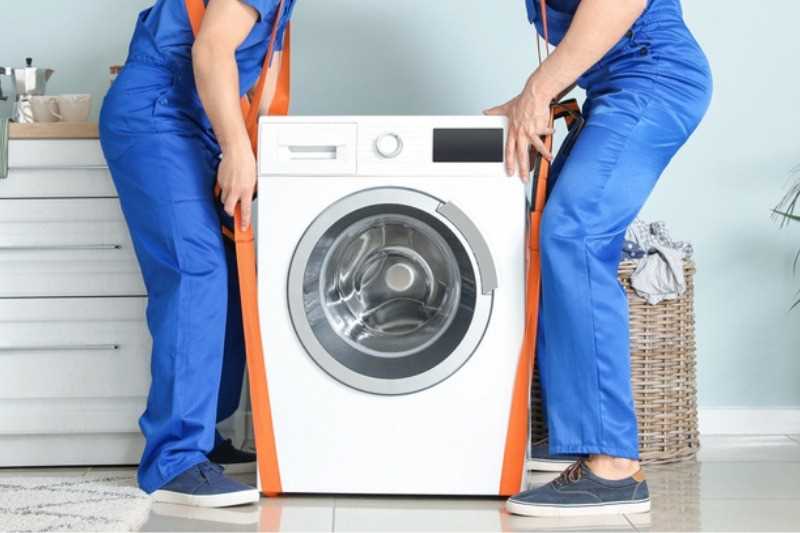
One of the most common reasons why washing machines shake during operation is due to leveling issues. If your washing machine is not properly leveled, it may cause excessive vibrations and movement.
Here are a few troubleshooting tips to address leveling issues:
- Check the floor: Ensure that the floor is stable and able to support the weight of the washing machine. If the floor is uneven or soft, it can contribute to shaking.
- Adjust the leveling feet: Most washing machines have adjustable leveling feet that can be raised or lowered to ensure stability. Use a level tool to check if the machine is level and make adjustments as needed.
- Use a rubber mat: Placing a rubber mat underneath the washing machine can help absorb vibrations and reduce shaking. This can be especially useful if your washing machine is on a hardwood or tile floor.
- Check for worn-out suspension springs: If your washing machine is still shaking after checking the floor and adjusting the leveling feet, it’s possible that the suspension springs are worn out. These springs help to stabilize the drum during operation and can become weak or broken over time. Consider contacting a professional to replace the springs if needed.
- Consider professional help: If you are unable to resolve the leveling issues or the shaking persists, it may be worth contacting a professional technician. They have the expertise to diagnose and fix the problem effectively.
Addressing leveling issues can greatly reduce or eliminate shaking during the washing machine’s operation. Regular maintenance and proper leveling can help prolong the lifespan of your washing machine and ensure smooth and stable operation.
Excessive Vibration Dampening
Excessive vibration dampening is a common cause of washing machine shaking. Vibration dampening pads or mats are often used to reduce vibration and noise caused by the machine during operation. However, if these pads are too thick or too soft, they can actually contribute to excessive vibration.
Here are some troubleshooting tips to address excessive vibration dampening:
- Check the thickness of the dampening pads: If the pads are too thick or soft, they may not provide enough stability and can cause the washing machine to shake. Consider using thinner or firmer pads to improve stability.
- Inspect the condition of the dampening pads: Over time, the dampening pads can wear out or become deteriorated, reducing their effectiveness in reducing vibrations. If the pads are worn or damaged, they should be replaced with new ones to restore proper dampening.
- Ensure proper installation: Make sure that the dampening pads are correctly installed and positioned. They should be placed evenly under all corners of the washing machine to distribute the weight evenly and minimize vibration.
- Consider alternative dampening solutions: If the dampening pads are not providing sufficient vibration reduction, you may want to explore other dampening solutions. This can include using anti-vibration pads specifically designed for washing machines or installing a vibration isolation platform.
By addressing excessive vibration dampening, you can help stabilize your washing machine and reduce shaking during operation, creating a smoother and quieter laundry experience.
FAQ
Why is my washing machine shaking during the spin cycle?
There are several possible reasons why your washing machine may be shaking during the spin cycle. It could be due to an unbalanced load, a problem with the machine’s leveling, or a fault with the motor or suspension system. It is recommended to check the load balance, make sure the machine is level, and contact a professional if the issue persists.
Can an unbalanced load cause a washing machine to shake?
Yes, an unbalanced load can cause a washing machine to shake. If the contents of the machine are not evenly distributed, it can create an imbalance during the spin cycle and result in shaking. To prevent this, make sure to distribute the clothes evenly in the machine and avoid overloading it.
What should I do if my washing machine is shaking?
If your washing machine is shaking, there are a few troubleshooting steps you can take. First, check if the load of clothes is evenly distributed in the machine. Rearrange them if necessary. Next, ensure that the machine is level by adjusting the feet. Finally, make sure the machine is not overloaded. If the issue persists, it may be a good idea to contact a professional for further assistance.
Is it normal for a washing machine to shake?
While some vibration and movement is normal during the spin cycle, excessive shaking is not normal for a washing machine. If you notice that your machine is shaking excessively, it is recommended to investigate and address the issue. This will help prevent further damage to the machine and ensure its proper functioning.
Why is my washing machine shaking during the spin cycle?
There can be several reasons for your washing machine to shake during the spin cycle. It could be an unbalanced load, worn-out shock absorbers, or even an issue with the leveling of the machine. It’s best to check these factors and troubleshoot accordingly.












